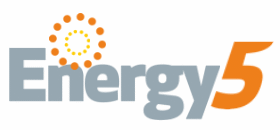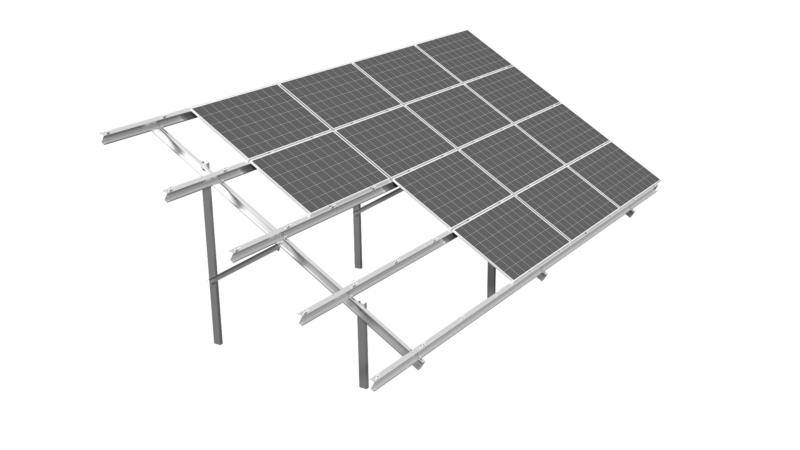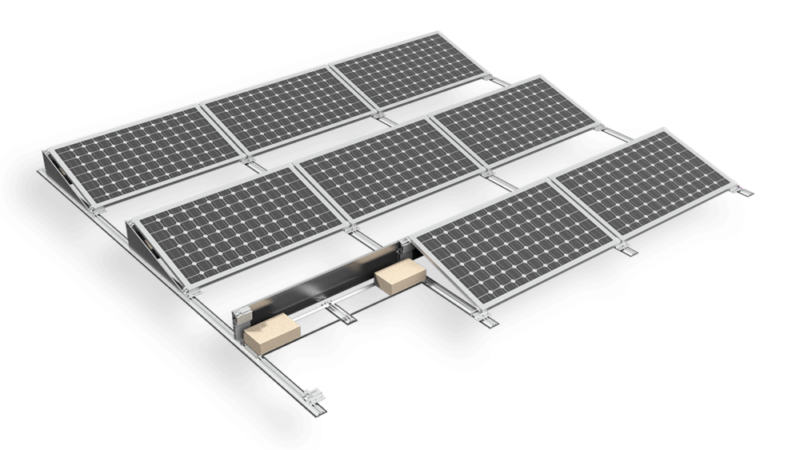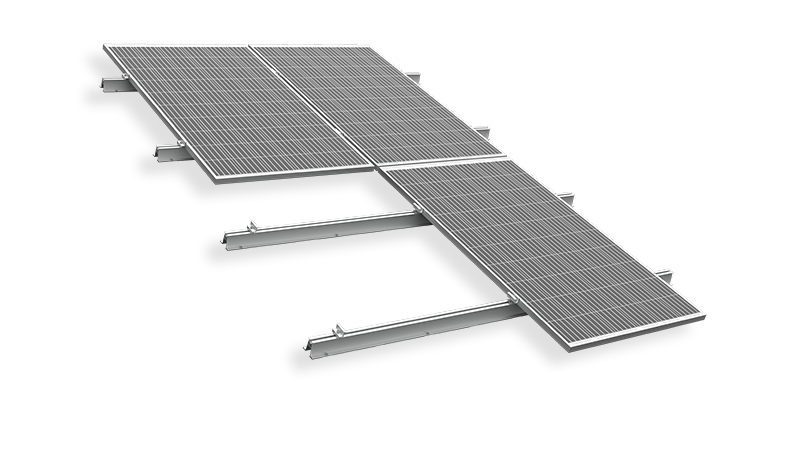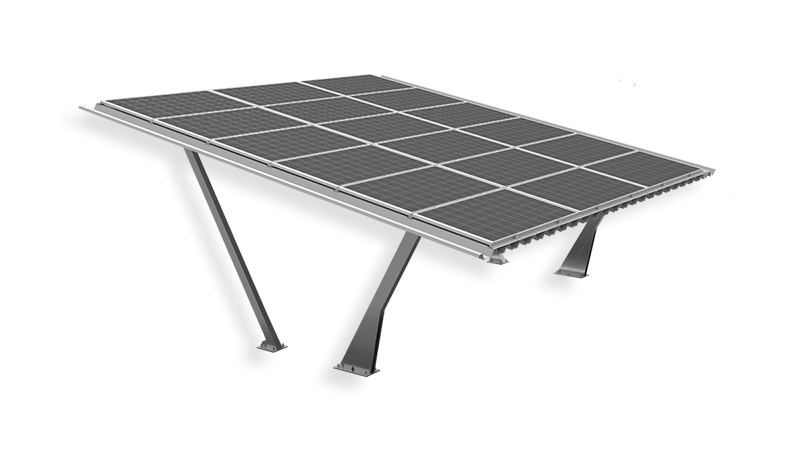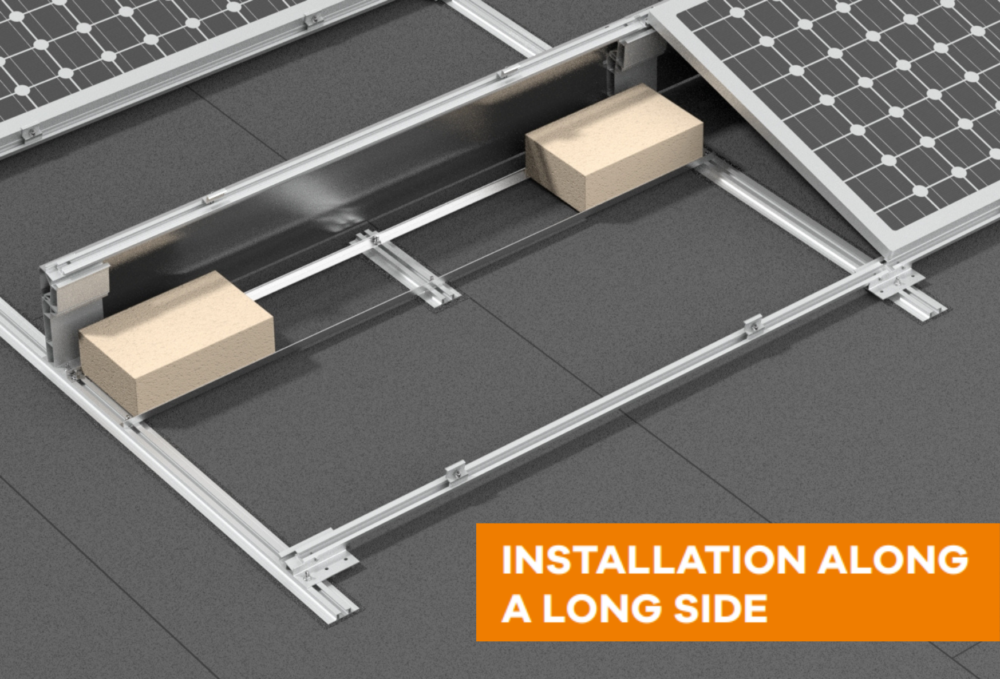
Discover ballast systems for flat roofs
Both in urban and rural landscapes, we most often see photovoltaic structures located on houses with sloping roofs. This does not mean, however, that PV systems mounted on flat roofs are less popular! There are three methods of attaching the structure to a roof with a flat surface – mechanical, glued/welded and ballast. In what situations does the last one works and why should you choose it?
What are flat roofs?
Flat roofs include those surfaces whose inclination angle does not exceed 5°. Due to the rather specific construction of flat roofs, mechanical installation of photovoltaic installations is not possible on all surfaces. This is primarily due to the waterproofing function of the plane, which nowadays has a double role – the roof and the ceiling above the top floor of the building. The key at the design stage of a specific photovoltaic system is to present the technical documentation of roof elements. The analysis of the information contained therein, including information on the roof load capacity, allows the use of a personalized solution that will enable safe and long-term use of the installation.
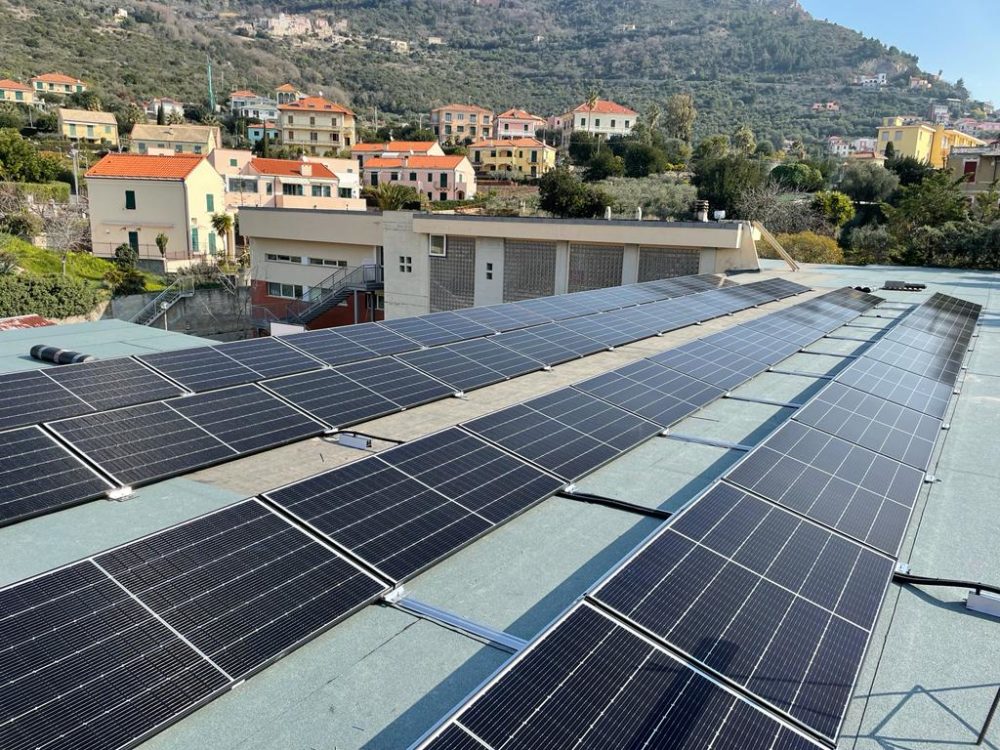
Unlike pitched roofs, which directly define the angle of inclination of the photovoltaic modules, flat roof systems allow the installation of panels with a predetermined slope. This is a definite advantage of this type of mounting systems due to the optimal exposure of the panels, allowing for the perpendicular incidence of sunlight on the surface of the module.
The Energy5 offer includes two reliable types of ballast structures for mounting photovoltaic modules – aerodynamic systems and ekierka eco systems loaded with concrete blocks. Both of these solutions are widely used in multi-family residential buildings, enterprises, as well as single-family houses whose owners want to generate green energy for their farm.
Characteristics of ballast structures
In order to obtain the most favorable angle of inclination of photovoltaic modules in flat roof systems, angle profiles are used, which together form characteristic triangles. Depending on the selected mounting system, individually designed structural elements are used to ensure durability and safety of use of the PV installation.
- Aero S and Aero EW aerodynamic systems
Aerodynamic systems, as the name suggests, have excellent parameters that eliminate the negative effects of wind on the entire structure. The streamlined shape and the permanent connection of the rows reduce the amount of applied load and do not exceed the roof load capacity, it also prevents the formation of local overload points. Thanks to aerodynamic systems, the limited load capacity of the roof is no longer a problem.
Aero systems are available in two variants, used depending on the specifics of the top surface of the building:
– Aero S structure, on which modules are installed in a horizontal orientation, exposed to the south,
– Aero EW structure, designed for horizontal installation of panels in the east and west direction.
It is important that in the case of both these solutions, we offer 2 ways of attaching PV modules to structural elements – on their long and short sides.
- Ekierka Eco with ballast
Systems for a flat roof, taking the form of triangles connected with construction profiles and ballasted, allow for maximum use of the roof surface for photovoltaic modules. Their special feature is the ability to freely configure the panels – this solution is especially recommended when there are numerous physical obstacles on the available slope, such as chimneys, skylights, air conditioners or satellite dishes.
An additional advantage of the structure is the lack of interference with the roof sheathing and the possibility of installing modules in both horizontal and vertical orientation.

Check out our possibilities!
We have been active in the renewable energy sector for over 7 years. We are distinguished primarily by design flexibility, as well as attention to meeting legal requirements, ensuring durability and long-term safety of use of photovoltaic structures. We are constantly improving our offer by conducting numerous system tests in accredited research centers. The quality of our products and services is confirmed by the National Technical Assessment issued by the Building Research Institute, and the use of the highest quality construction elements ensures that the systems maintain exemplary technical parameters.
17.11.2022
